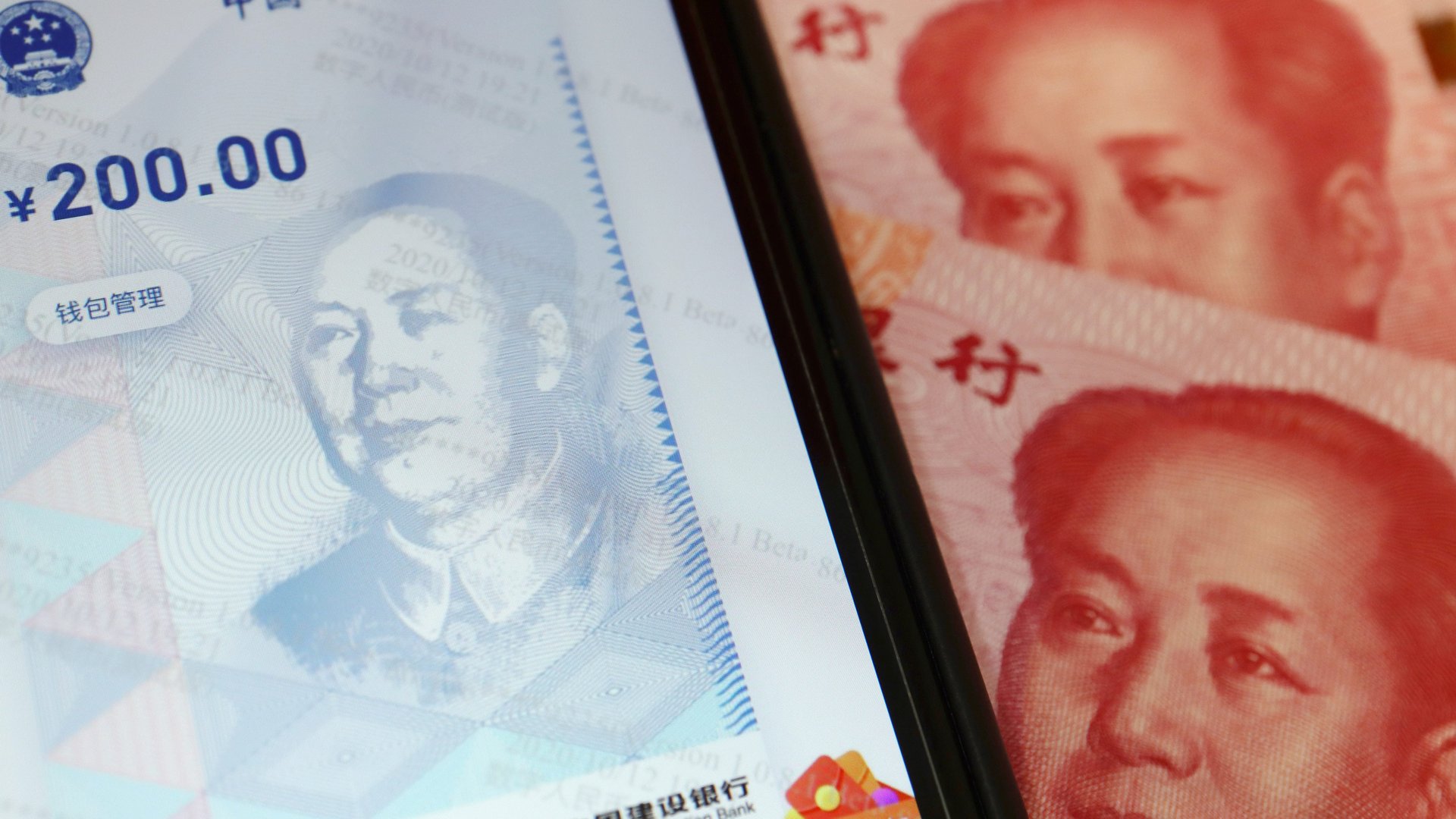One way China could make its digital yuan go global: pay people to use it
The digital yuan is the most advanced of all current central bank digital currencies projects worldwide. Over 2 billion digital yuan has been spent so far in pilot schemes across the country, and there are even counterfeits of the virtual currency.


The digital yuan is the most advanced of all current central bank digital currencies projects worldwide. Over 2 billion digital yuan has been spent so far in pilot schemes across the country, and there are even counterfeits of the virtual currency.
But China’s ambitions go far beyond that. Its leader Xi Jinping recently spoke of (pdf) the need to “accelerate the construction of the digital economy,” including by shaping its international rules. That reflects Beijing’s broader strategy of setting the world’s technical standards—international norms that define how the global economy operates.
A key way for Beijing to elevate its role in international trade and global financial markets is to “internationalize” the renminbi, the yuan’s official name. That means increasing the yuan’s share of global transactions and currency reserves, both of which are currently dominated by the US dollar. Challenging the greenback’s dominance would also help shield Beijing from US sanctions.
But here’s the rub: the digital yuan will struggle to gain traction worldwide so long as the yuan isn’t widely used in the global financial system. Though the thinking in China is that the digital yuan could help internationalize the yuan by offering a new and efficient way for countries to settle cross-border payments, it isn’t technology that pushes people to use a currency. What would ultimately draw users to the yuan is confidence that the currency is stable, freely convertible, and backed by a sound, transparent economy.
Short of drastically reforming the yuan and lifting all currency controls, some experts have suggested setting a special discounted exchange rate for the digital yuan in order to attract more users in the short term.
This idea is laid out in a recent article (link in Chinese) by Ju Jiandong, a professor of finance at Beijing’s Tsinghua University. In order to undercut Swift, the world’s primary system for cross-border transactions that itself is dominated by the US dollar, Ju writes, China can initially subsidize transactions with a preferential exchange rate on the digital platform, giving “certain conversion discounts to companies or individuals who purchase digital renminbi for payment and settlement…to increase the demand for digital renminbi.”
In effect, that would mean being able to buy more digital yuan with a dollar than you could with a regular yuan, presumably with the state subsidizing the difference. Or put another way: Beijing could pay people to use its digital yuan.
If state authorities adopt this proposal, the yuan would have a third exchange rate on top of the existing two.
Currently, the yuan has a domestic onshore rate, known as the CNY, which is tightly managed and only allowed to trade within a narrow 2% band above or below the previous day’s midpoint. The offshore rate, or CNH (H is for Hong Kong, the world’s largest offshore yuan trading hub), is freely traded against global currencies. The latest offshore rate, for example, is 6.54 yuan to the dollar, while the onshore rate gets you closer to 6.56 yuan to the dollar. If the offshore rate depreciates too quickly and deviates too much from the onshore rate, China’s central bankers can step in by using its vast foreign currency reserves to prop up the yuan.
Now imagine adding a third exchange rate to the mix: that of the digital yuan. Setting the right rate will be the key challenge here, Ju writes. Too low and the digital yuan won’t be attractive enough. Too high, however, and people will use the digital yuan platform for “high-frequency arbitrage, which the platform will not be able to withstand and collapse” due to the volume of transactions to be processed. Arbitrage offers the chance to lock in a profit by taking advantage of price differences for the same asset in different markets at the same time.
One way to to prevent that kind of high-speed arbitrage is to instead reward vendors with “points” for using the digital yuan, which they can then redeem for money only after a lock-in period, say four to twelve weeks, said Victor Shih, an expert on China’s political economy and a professor at University of California San Diego.
“The time lapse will make arbitrage very hard. It may incentivize firms to engage in frivolous transactions to build up points but at least that won’t crash the platform,” he said.
Still, addressing the issue of arbitrage leaves a fundamental problem unsolved, said Shih: large amounts of yuan could accumulate offshore, and “if offshore users…can lend the yuan to financial institutions, the yuan can be shorted.” That is, financial institutions would sell borrowed yuan, betting that it’ll go down in value, and buy it back later at a cheaper price. That would put downward pressure on the yuan, something China’s regulators are nervous about.
To fix that, Shih said, the central bank could prohibit offshore non-bank financial institutions from holding the digital yuan, but that would only limit offshore flows—which would have the opposite effect of internationalizing the yuan. And so the problem once again comes full circle.